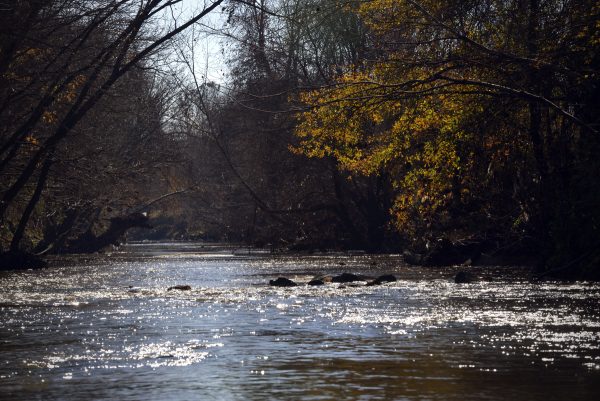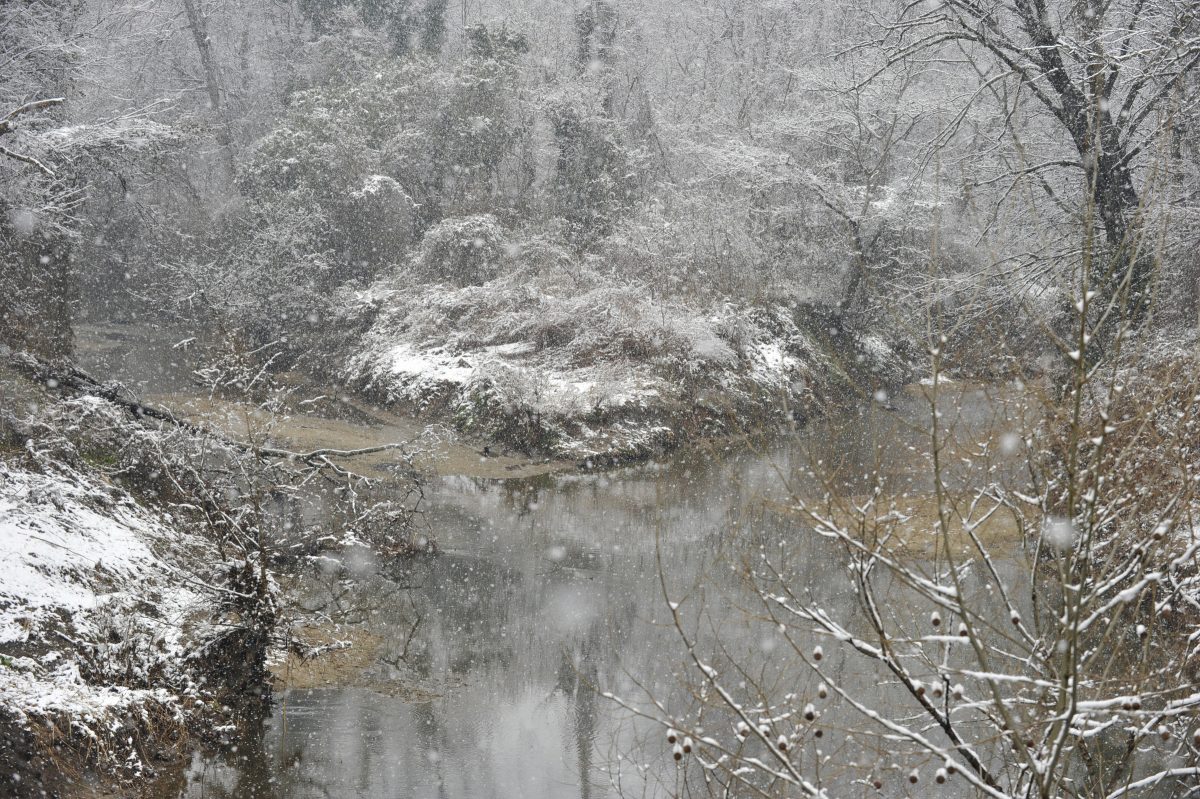How much do you know about Charlotte’s creeks? Take our quiz

I’ve spent much of the past few months researching Mecklenburg County’s creeks, for a PlanCharlotte.org project called KEEPING WATCH on WATER: City of Creeks. A related gallery exhibit opened March 27 at UNC Charlotte Center City. To see a full list of events, click here, or visit KeepingWatch.org for updates.
To whet your appetite for a lengthier exploration of the project’s offerngs, here’s a quiz to test your knowledge of the creeks of the county. Answers below. A score of 10 or higher makes you a Hydrological Hero.
1. How many miles of creeks does Mecklenburg County have?
A. 50. B. 300. C. 1,200. D. 3,000
2. How many creeks in Mecklenburg have names?
A. 38. B. 83 C. 126 D. 184
3. How many creeks in Mecklenburg have a name that starts “Mc…”?
A. One. B. Six. C. 10. D. None
4. What’s the difference between a creek and a brook and a stream?
A. No difference. B. Brooks are only in New England. C. Creeks are bigger than brooks and smaller than streams. D. Creeks and brooks are the same, and both are streams, as are rivers.
5. How can I tell whether that water running through my yard is a creek or just a ditch?
A. If it’s in your yard it’s a ditch because creeks are bigger. B. It’s a creek only when it rains. C. If it has water in it when it’s not raining, it’s a creek. D. If it’s in your yard, who cares?
6. Where does the water in a ditch beside the street go?
A. Into the storm sewer system. B. Into a creek. C. It goes somewhere?
7. Where does the water in storm drains go?
A. Into the storm sewer system. B. Into a creek. C. It goes somewhere?
8. How can we stop our creeks from flooding?
A. Dredge them deeper and line them with rocks. B. Build houses on tall mounds of dirt or on stilts so the water doesn’t get in them. C. We can’t.
9. How many creeks in Mecklenburg are named for animals?
A. Two. B. Six. C. 10. D. 23
10. Two creeks flank uptown Charlotte. One is Little Sugar Creek. What is the other one?
A. Irwin Creek. B. Irvins Creek. C. Paw Creek. D. Polk Ditch.
11. Are Mecklenburg creeks polluted?
A. Yes. B. No.
12. What is the biggest source of pollution for our creeks?
A. Factories. B. Dry cleaners. C. Rogue chemical dumpers. D. Water from roads, roofs and parking lots.
ANSWERS BELOW

Answers:
1. D. 3,000 miles. About 1,000 miles of that total are creeks that have water in them year round.
2. C. 126. Of those, 81 have names like “Reedy Creek,” and 45 more are named “tributary of …” another creek.
3. B. Six: McAlpine, McCullough, McDowell, McIntyre, McKee and McMullen creeks.
4. D. According to Merriam- Webster’s Ninth New Collegiate Dictionary, a stream is any body of running water. A creek is “a natural stream of water normally smaller than and often tributary to a river. A brook is a “creek.” So is a “brooklet.”
5. C. Generally, if there’s water in it year round, it’s a creek, also known as a “perennial stream.” If it has water for a few weeks or months but not all year, it’s a small creek, technically an “intermittent or seasonal stream.” If the only water in it is during a rain or until puddles dry, it’s probably a ditch.
Here’s what the U.S. Geological Survey glossary http://water.usgs.gov/wsc/glossary.html#B says: “Intermittent or seasonal. One which flows only at certain times of the year when it receives water from springs or from some surface source such as melting snow in mountainous areas.”
“Perennial: One which flows continuously.”
6. B. It either soaks into the ground or it flows into a creek.
7. B. Unlike older cities, in Charlotte-Mecklenburg storm drains don’t lead to a treatment plant. Water in storm drains goes into the nearest creek.
8. C. We can’t. Flooding is what creeks do in a heavy rain. To expect a creek never to flood is like expecting it will never rain. Floodplains near creeks and rivers are nature’s way of letting the excess water spread out before it rushes downstream. Buildings in a floodplain are more likely to eventually be flooded.
9. B. Six: Swan Run, plus Beaverdam, Duck, Gar, Goose, Mallard creeks.
10. A. Irwin Creek.
11. A. Generally, yes, although many spots in many creeks are suitable for incidental human contact at some times of the year. But without water tests it’s difficult for the public to know precisely where and when a creek is contaminated.
12. D. Although factories and rogue dumpers can sometimes pollute, the worst pollution problems for Mecklenburg creeks come from storm water runoff from parking lots, driveways and streets, and from bacterial contamination. Decades ago industries and sewage treatment plants piped pollutants straight into streams and rivers. The 1972 Clean Water Act has generally stopped that. Today the polluters are:
- Storm water runoff from pavement; its speed and volume scours out creek habitats.
- Sediment – mud – from runoff can smother creek life.
- Fecal bacterial contamination from sewer spills, wildlife and pets.